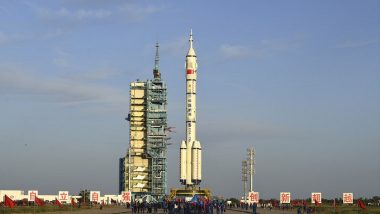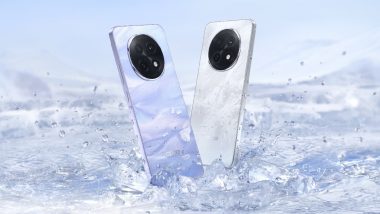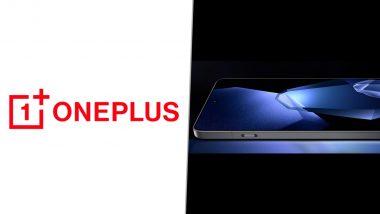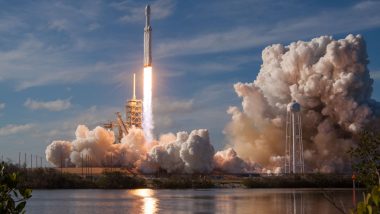Beijing, June 17: China on Thursday successfully launched its crewed spacecraft, sending three astronauts to its space station's core module Tianhe for a three-month mission.
The Shenzhou-12 spacecraft, atop a Long March-2F carrier rocket, was launched from the Jiuquan Satellite Launch Centre in northwest China's Gobi Desert. The launch was telecast live by the state-run CGTN-TV. In few minutes of the launch, the mission control announced that the launch was a complete success. Is This the First Image of Chinese Rocket? Viral Tweet Claiming ‘First Photo’ of Long March 5B Is Fake, Know the Truth Here.
China Successfully Launches First Crewed Mission for Space Station Construction
#Breaking: China successful launched Shenzhou12 manned spacecraft via a Long March 2F rocket from Jiuquan Satellite Launch Center at 9:22 am Thursday. Three astronauts onboard the DevineVessel are now heading to ChinaSpaceStation and will become its first batch of visitors. 🎉🎉 pic.twitter.com/tkpdABUrAL
— Angelina (@SpaceGirlLina) June 17, 2021
It is China's seventh crewed mission to space and the first during the construction of China's space station, according to the China Manned Space Agency (CMSA). It is also the first in nearly five years after the country's last manned mission in 2016.
The three astronauts are commander Nie Haisheng, a 56-year-old veteran who participated in the Shenzhou-6 and Shenzhou-10 missions, Liu Boming, 54, who was part of the Shenzhou-7 mission, and Tang Hongbo, 45, who is in his first space mission.
They are expected to set a new record for China's manned space mission duration, exceeding the 33 days spent by the Shenzhou-11 crew in 2016.
In 2016, two male astronauts -- Chen Dong and Jing Haipeng -- were sent via the Shenzhou-11 spacecraft to Tiangong-2, a prototype of the space station where they later stayed for about a month.
After entering orbit, the Shenzhou-12 spaceship will dock with the in-orbit space station core module Tianhe, forming a complex with Tianhe and the cargo craft Tianzhou-2. The astronauts will be stationed in the core module. Their work will be more complicated and challenging than the previous crewed missions, according to Hao Chun, director of the CMSA.
The Shenzhou-12 crew will complete four major tasks in orbit, said Ji Qiming, assistant to the CMSA director, on Wednesday. The crew will operate and manage the complex, including the in-orbit test of the Tianhe module, verification of the recycling and life support system, testing and operation training of the robotic arm, as well as management of materials and waste.
After that they will move, assemble and test extravehicular spacesuits and perform two extravehicular activities for work including assembling an extravehicular toolbox, lifting the panoramic camera and installing extended pump sets.
Then they will carry out space science experiments and technology experiments, as well as public outreach activities. Finally they will manage their own health through daily life care, physical exercise, and regular monitoring and assessment of their health status.
(This is an unedited and auto-generated story from Syndicated News feed, LatestLY Staff may not have modified or edited the content body)













 Quickly
Quickly




















